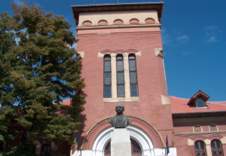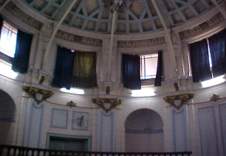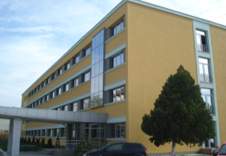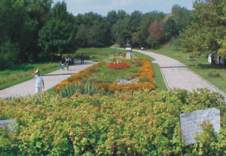 |
 |
|
UNIVERSITY OF CRAIOVA
The University of Craiova - founded in 1966 and consisting of 7 faculties (Faculty of Mathematics, Faculty of Philology, Faculty of Electrical Engineering, Faculty of Agriculture, Faculty of Horticulture, Faculty of Chemistry and Faculty of Economic Sciences) - joined the system of Romanian academic institutions in the second half of the 20th century, being, in chronological order, the fifth university in our country after University of Iasi (1860) comprising three faculties: Faculty of Law, Faculty of Philosophy and Faculty of Theology; University of Bucharest (1864) started initially with the Faculty of of Law, Faculty of Letters and Faculty of Sciences, University of Cluj (1959), University of Timisoara, (1962), including the Faculty of Mathematics, Faculty of Physics and Faculty of Philology; The current structure of the University of Craiova comprises 17 faculties:
There are also a number of academic institutes, centres and departments within the University. The Drobeta Turnu-Severin University Centre was set up in the 2004/2005 academic year, being part of the University of Craiova. INTERNATIONAL RELATIONSThe International Relations Office is in charge with International Relations policy-making within the University of Craiova. Objectives The International Relations Office aims to enhance international cooperation via multilayered action:
Members
University of Craiova is affiliated with well-known international associations:
The International dimension of the University of Craiova is also reflected by:
UNIVERSITY HERITAGEI. THE CENTRAL BUILDING OF THE UNIVERSITY - THE RECTORATE Today the main building is the headquarters of the Rectorate and of the following faculties: Law and Administrative Sciences; Physics; Letters; Mathematics and Computer Science; Horticulture; Socio-Human Sciences; Theology; Economic Sciences and Business Administration.
II. THE AGRONOMY COMPLEX The Agronomy Complex includes the following buildings: the Agricultural Science Faculty (built in 1930), the student residences no. 1-5, a student restaurant, the halls and workshops for agricultural machinery. The faculty building also includes the acting room for students from the Performing Arts department (part of the Faculty of Letters), its library and other rooms designed for teaching and training purposes. The Buia Aula Magna - an auditorium with a seating capacity of 198 inside The Faculty of Agriculture and bearing the name of the founder of the Botanical Gardens of Craiova.
III. THE MECHANICS COMPLEX This complex comprises: the Faculty of Mechanical Engeneering, the Faculty of Chemistry, a production workshop, a mechanics laboratory, experimental greenhouses, four student residences and a student restaurant.
IV. THE ELECTROTECHNICS COMPLEX This complex hosts the Faculty of Electrotechnics, the Faculty of Automatics, Computer Science and Electronics and the Faculty of Engineering for Electromechanics, Environment and Industrial Informatics.
V. PHYSICAL EDUCATION COMPLEX
VI. THE CENTRAL LIBRARY AND "UNIVERSITARIA" PRINTING AND PUBLISHING HOUSE The Central Library has an encyclopaedic profile and includes over 1,000,000 volumes.
VII. "TELEUNIVERSITARIA" TV STATION AND STUDENT RESIDENCES It was founded in 1995 and, since January 1996, the programmes have been carried out under the TELE "U" logo, with a broadcasting range of 30 km around Craiova.
VIII. THE "ALEXANDRU BUIA" BOTANICAL GARDEN
The "Alexandru Buia" Botanical Garden, it was founded in 1952 in order to contribute to a better training of the students at the faculties of Agriculture and Horticulture, and to enlarge the scientific research base; it was also designed as a recreational and aesthetic educational space open to the general public.
IX. CUDTS It has functioned in Drobeta Turnu-Severin since the 2004/2005 academic year being an integral part of the university.
X. THE UNIVERSITY HOUSE - THE UNIVERSITY CLUB
The Romanescu House, currently the University House (University Club), is listed among the Architectural Monuments in the county and has undergone several stages of construction, decoration and restoration. It is considered one of the most representative buildings of the nineteenth century in Craiova, the last intervention in its construction being performed in 1903.
|
|||||||||||||||||||||||||||||||||||||||||||||||||||||||||||||||||||||||||||||
| Copyright © University of Craiova 2010. | Website of the University of Craiova |
|
|||||
|
 Address: 13 A.I. Cuza Street, 200585 Craiova
Address: 13 A.I. Cuza Street, 200585 Craiova































